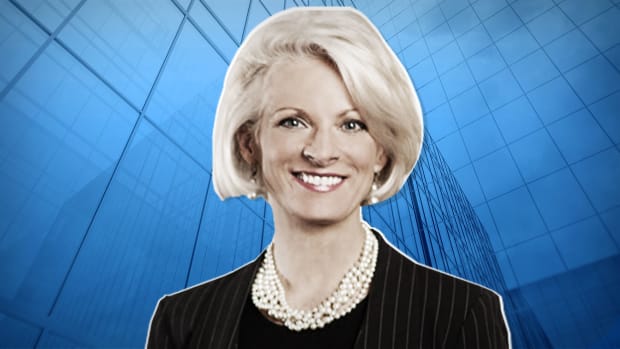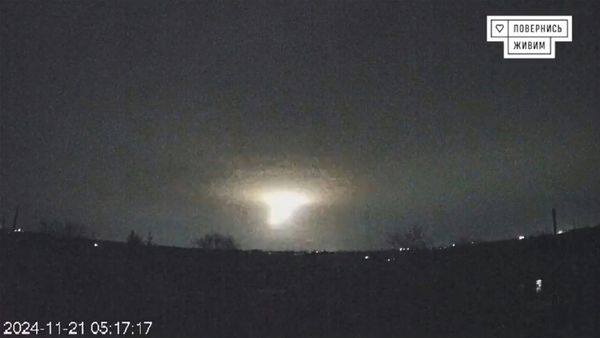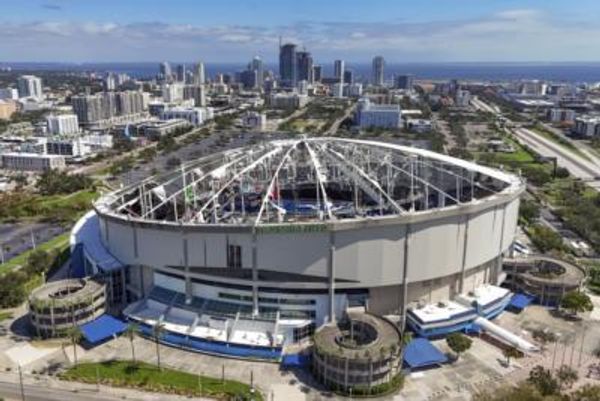Launched out of a Missouri mall in 1997, Build-A-Bear Workshop (BBW) has followed the changing face of retail over the last two decades.
Earlier this week, chief executive Sharon John Price John rang the New York Stock Exchange's opening bell in celebration of its 25th anniversary.
And while malls still make up for a majority of Build-A-Bear sales, the brand known for assembling stuffed animals in front of the child has also been setting its sights on everything from cruise ships and family resorts to strategic partnerships — and, in the second half of 2022, brought in a record $218.3 million in revenue.
"In 1997, the mall was the place where families often gathered for fun and entertainment," Build-A-Bear CEO Sharon Price John told TheStreet in an exclusive interview. "When you really pull that back one level, the strategy is still to be a place where families go for fun and entertainment."
Price John talked to TheStreet about toys, holiday shopping trends the changing face of retail. The interview has been edited for length and clarity.
TheStreet:The 25-year mark means that Build-A-Bear has reached the point at which the first kids to know you are now in their thirties and starting to have children. How do you plan to lean (or not) into the brand's nostalgia factor going forward?
Price John: A lot of toy brands create that affinity relationship with people when they're children who then want to share that with future generations. Certain brands are also able to pivot and evolve their own businesses to be an enthusiast brand appealing directly to that older consumer as they age. Build-A-Bear is one of the brands that has been able to do that. We partner with everything from Matrix and Deadpool to Harry Potter. So many of our sales right now are not because the person who came to Build-A-Bear as a child is now bringing their children back but because they are collecting Build-A-Bear themselves. 40% of our sales now come from teens and adults.
TheStreet: What kinds of toys (and other items) sell well right now?
Price John: We diversified into gifting and gift boxes that are put together with a special bear that has a candle, maybe some tea or a mug. An entire gift that you can give to a friend for a number of occasions. We also sell matching pajamas because the historical thing that kids liked to do was take their teddy bear to bed with them. And then we've expanded into categories outside our core competency such as pet toys that are launching later this year with PetSmart.

Build-A-Bear Workshop
TheStreet: The holiday season is when many families start to truly feel the impact of inflation and, this year in particular, many are looking for discounts before buying. Is this something that you've come across?
Price John: We have had some price increases but most of those were on what we would call bundles and collectible products. We made a point to maintain really approachable entry-level price points and our Count Your Candles Bear where children can come in during their birthday month and buy our birthday bear for the age they're turning. And while no category is recession-proof, toys are often recession resistant during the holidays. We don't generally have to discount significantly for Build-A-Bear.
TheStreet: When Build-A-Bear launched in 1997, malls were at the peak of their popularity. We are now in a very different retail landscape; how are you adapting?
Price John: Not all malls are created equal and many have evolved over time given traffic challenges. Lots of malls are still very profitable for us but we've pushed for diversification and shifted our retail strategy to what would be considered non-traditional locations such as cruise ships, restaurants and Great Wolf Lodge [a family resort in Pennsylvania]. 35% of our locations are now in what were formerly non-traditional [places.]
In 1997, the mall was the place where families often gathered for fun and entertainment. When you really pull that back one level, the strategy is still to be a place where families go for fun and entertainment. We have to meet our guests where they are. That's not only shifting our physical footprint but also addressing the digital economy and providing ways for people to transact and engage with us online.
TheStreet: Has Build-A-Bear been affected by supply chain disruptions?
Price John: Oh, absolutely. We're much more diversified from a sourcing perspective than we were nine years ago but a lot of our products come from China. The current situation requires alacrity and flexibility. We made some choices to pull forward our inventory to avoid disruption and make sure that we were in a strong inventory position going into the holiday season. We also did that last year which was which was very smart on our part because there were comparative toy shortages during the holiday season in 2021.
TheStreet: Do you anticipate this holiday season being different from past ones?
Price John: Build-A-Bear is so much more than just a stuffed animal. It's an experience and a marking of a moment in time. Last year there was a lot of anticipation and excitement around getting back out with families and doing some shopping. Assuming that we can continue to manage the Covid situation, I believe that people will have a great tendency to get out and do special things together. For many, it will be the first holiday in two years that they will have been able to do that and I think they'll look at it in a very celebratory and special way.







